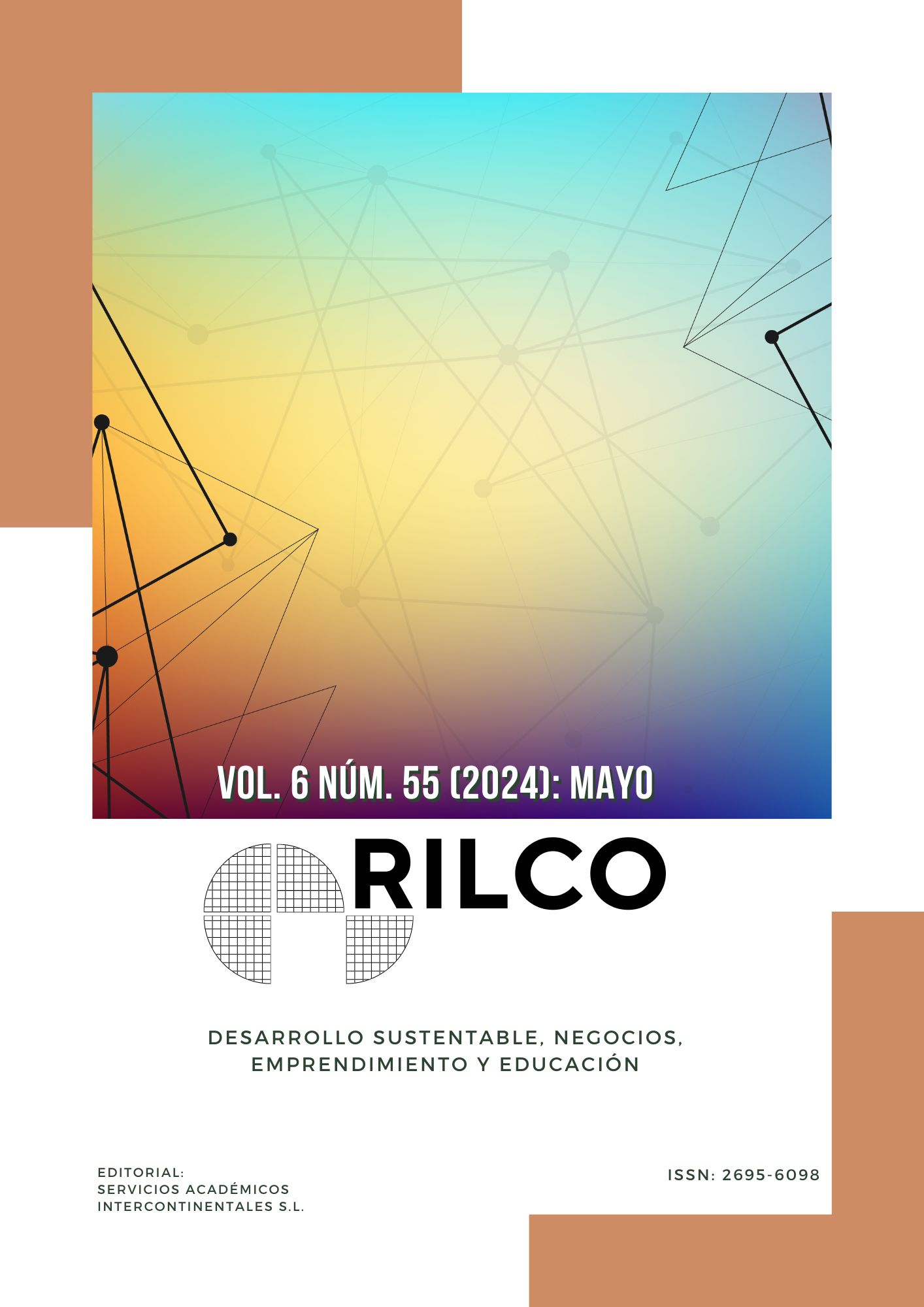Factores sociodemográficos y su relación con el diagnóstico nutricional del preescolar
DOI:
https://doi.org/10.51896/rilcods.v6i55.522Palabras clave:
factores sociodemograficos, diagnóstico nutricional y preescolarResumen
La importancia del desarrollo, el estado de nutrición y el diagnóstico nutricional en la etapa pediátrica conforme a todos los factores sociodemográficos que los rodean es de gran relevancia debido a que en esta edad es donde se estructura gran parte de sus costumbres y hábitos. Entre los 4 y 6 años los niños asumen sus patrones de comportamiento, base primordial para la toma de decisiones, gustos o disgustos. Objetivo: analizar la relación que existe entre los factores sociodemográficos y el estado de nutrición en pacientes pediátricos en etapa preescolar. Material y Métodos: tipo de estudio observacional analítico transversal prospectivo. La población fue de 98 la muestra con la que se trabajó se estableció de 69 seleccionados a través de un muestreo no probabilístico a conveniencia. Se utilizó una báscula digital marca Omron HBF-514 y un estadiómetro de pared con 2 metros de largo marca genérica, modelo JSM-SH-2M-1. Para analizar la relación se utilizó la prueba estadística de Chi cuadrada tomando como significativo un p valor menor a 0.05. Resultados: la principal remuneración económica de los menores, el promedio fue para eutrofia con un 44% de acuerdo a una remuneración por trabajo propio, en el mismo diagnóstico para remuneración por apoyo de pareja fue de 56%, y un 0% para apoyo familiar. Seguido del diagnóstico de sobrepeso donde hubo un 50% para trabajo propio y un 50% para remuneración por la pareja, sin ningún porcentaje en el caso de apoyo familiar. No se encontró relación estadísticamente significativa para estas variables (p=0.09). Conclusión: se identificó una prevalencia en el diagnóstico de sobrepeso y obesidad. Se observó para el diagnóstico de eutrofia un 44% para madres en relación de unión libre. Seguido del diagnóstico de sobrepeso donde un 43.8% para un estado civil casado, en el diagnóstico de obesidad un 35.7% para madres casadas.
Citas
Aliño, M., Navarro, R., López, J. R., & Pérez, I. (2007). La edad preescolar como momento singular del desarrollo humano. Revista Cubana de Pediatría, 79(4) Recuperado en 31 de julio de 2023, de http://scielo.sld.cu/scielo.php?script=sci_arttext&pid=S0034-75312007000400010&lng=es&tlng=es.
Bernabeu, M., & Sánchez, C. A. (2019). Asociación entre los factores demográficos y socioeconómicos con el estado nutricional en niños menores de 5 años en poblaciones rurales de Colima, México. Revista Española de Nutrición Humana y Dietética, 23(2), 48-55. https://dx.doi.org/10.14306/renhyd.23.2.545
Breilh, J., Handal, A. J., Lozoff, B., & Harlow, S. D. (2023). Factores sociodemográficos y nutricionales relacionados con el desarrollo neuroconductual: estudio en niños y niñas pequeñas de una zona rural del Ecuador. Uasb.edu.ec. ttp://hdl.handle.net/10644/3519
Castellanos. A. F., Rosado, J. G., Chel, L. A., Gallegos, S., & Betancur, D. A. (2018). Diagnóstico nutricional e intervención de orientación alimentaria en dos comunidades rurales de mujeres campesinas del sureste mexicano. Nutr. Clín. Diet. Hosp, 38(4), 116–122. https://doi.org/10.12873/384castellanos
CDC. (2021). Acerca del índice de masa corporal para niños y adolescentes. Centers for Disease Control and Prevention. https://tinyurl.com/tfnslnj
Cubero, J., Cañada, F., Costillo, E., Franco, L., Calderón, A., Santos, A.L., Padez, C., & Ruiz, C. (2012). La alimentación preescolar: educación para la salud de los 2 a los 6 años. Enfermería Global, 11(27), 337-345. https://dx.doi.org/10.4321/S1695-61412012000300018
Domínguez, P., & Olivares, S. (2008). Influencia familiar sobre la conducta alimentaria y su relación con la obesidad infantil. ALAN. 58,3 https://www.alanrevista.org/ediciones/2008/3/art-6/
Fernández, R., Flores, A., Franco, E., Auchter, M., & Torres, G. (2019). Sobrecarga del cuidador informal de adultos mayores internados en el servicio de clínica médica del hospital Geriátrico “Juana Francisca Cabral”. Rev. Fac. Med. UNNE. 39(2): 5-11. https://fi-admin.bvsalud.org/document/view/nfejv
Gutiérrez, S. A., & Ruiz, M. (2018). Impacto de la educación inicial y preescolar en el neurodesarrollo infantil. IE Revista de investigación educativa de la REDIECH, 9(17), 33-51. http://www.scielo.org.mx/scielo.php?script=sci_arttext&pid=S2448-85502018000200033&lng=es&tlng=es.
Leroy, J. L., Habicht, J. P., González, T., & Ruel, M. T. (2014). Maternal education mitigates the negative effects of higher income on the double burden of child stunting and maternal overweight in rural Mexico. J Nutr. 144(5): 765-770.
Macías, C., Herrera, M., Mariño, M., & Useche, D. (2014). Crecimiento, nutrición temprana en el niño y riesgo de obesidad. Archivos Venezolanos de Puericultura y Pediatría, 77(3), 144-153. http://ve.scielo.org/scielo.php?script=sci_arttext&pid=S0004-06492014000300008&lng=es&tlng=es.
Mallma, I., & Chuquillanqui, E. (2022). Preparación de la lonchera preescolar y escolar. DOI: 10.13140/RG.2.2.11817.06246
MedlinePlus. (2022). Desarrollo de los niños en edad preescolar. (2022). MedlinePlus enciclopedia médica. https://medlineplus.gov/spanish/ency/article/002013.htm
Mittal, A., Singh, J., & Ahluwalia, S. K. (2007). Effect of maternal factors on nutritional status of 1-5-year-old children in urban slum population. Indian J Community Med. 32(4): 264-267. DOI: 10.4103/0970-0218.37691
Pate, R. R., Frongillo, E. A., Cordan, K., Dowda, M., McLain, A. C., Torres, M. E., Brown, W. H., Bucko, A., & Shull, E. R. (2020). Linking Activity, Nutrition, and Child Health (LAUNCH): protocol for a longitudinal cohort study of children as they develop from infancy to preschool age. BMC public health, 20(1), 931. https://doi.org/10.1186/s12889-020-09023-7
PROFECO. (2023). Obesidad y sobrepeso. Menos kilos, más vida. Procuraduría Federal del Consumidor. https://www.gob.mx/profeco/documentos/obesidad-y-sobrepeso-menos-kilos-mas-vida?state=published
Ravasco, P., Anderson, H., & Mardones, F. (2010). Métodos de valoración del estado nutricional. Nutrición Hospitalaria, 25(Supl. 3), 57-66. http://scielo.isciii.es/scielo.php?script=sci_arttext&pid=S0212-16112010000900009&lng=es&tlng=es.
Sivanandham, R, A., Salome, R., Francis, S. D., Sampavi, R. D., Prasad, R. (2014). Nutritional status of children aged 3-6 years in a rural area of tamilnadu. Journal of clinical and diagnostic research: JCDR, 8(10), JC01–JC4. https://doi.org/10.7860/JCDR/2014/8902.4969
Publicado
Cómo citar
Número
Sección
Licencia

Esta obra está bajo una licencia internacional Creative Commons Atribución-NoComercial 4.0.
Usted es libre de:
- Compartir — copiar y redistribuir el material en cualquier medio o formato
- Adaptar — remezclar, transformar y construir a partir del material
Bajo los siguientes términos:
- Atribución — Usted debe dar crédito de manera adecuada, brindar un enlace a la licencia, e indicar si se han realizado cambios. Puede hacerlo en cualquier forma razonable, pero no de forma tal que sugiera que usted o su uso tienen el apoyo de la licenciante.
- NoComercial — Usted no puede hacer uso del material con propósitos comerciales.



